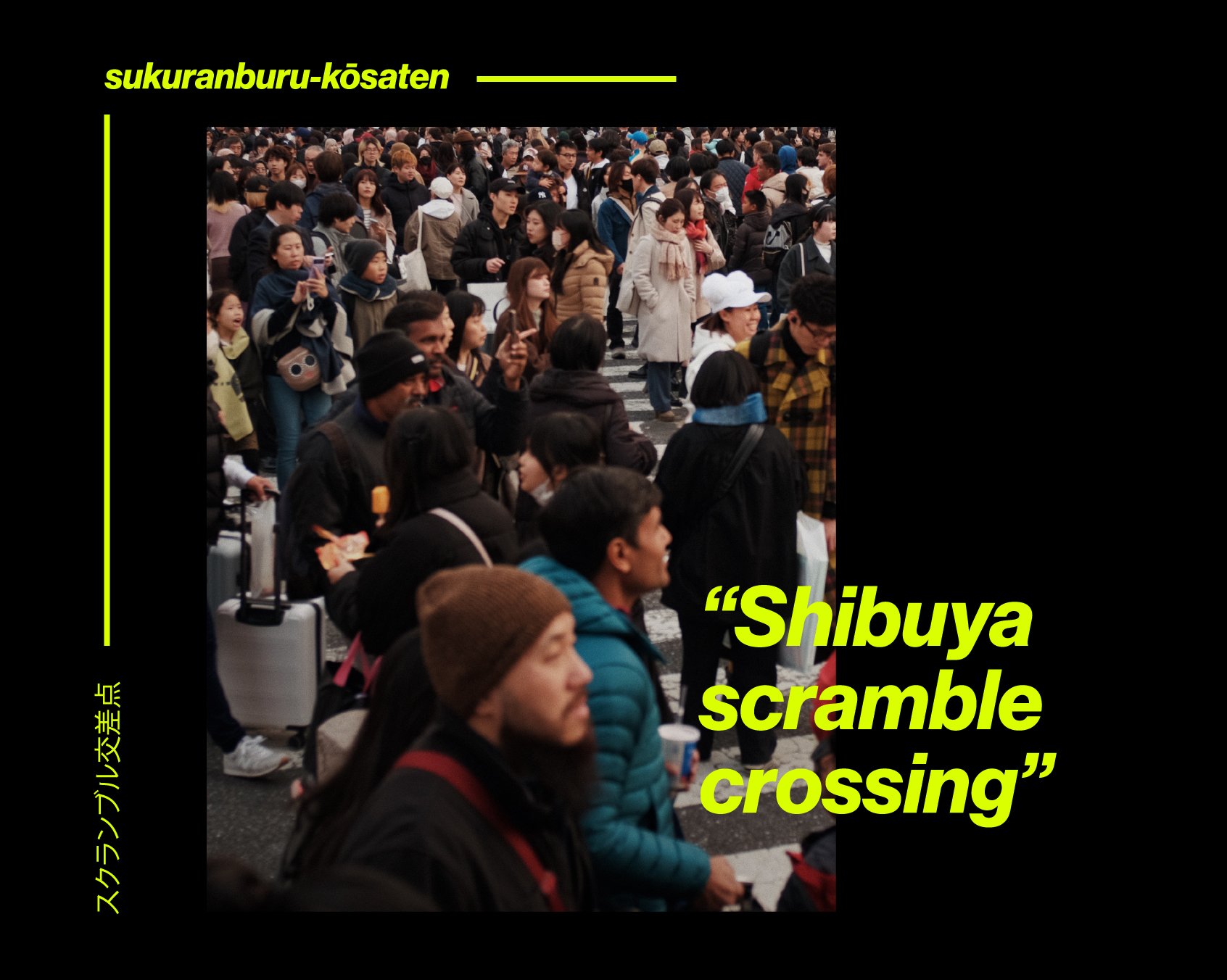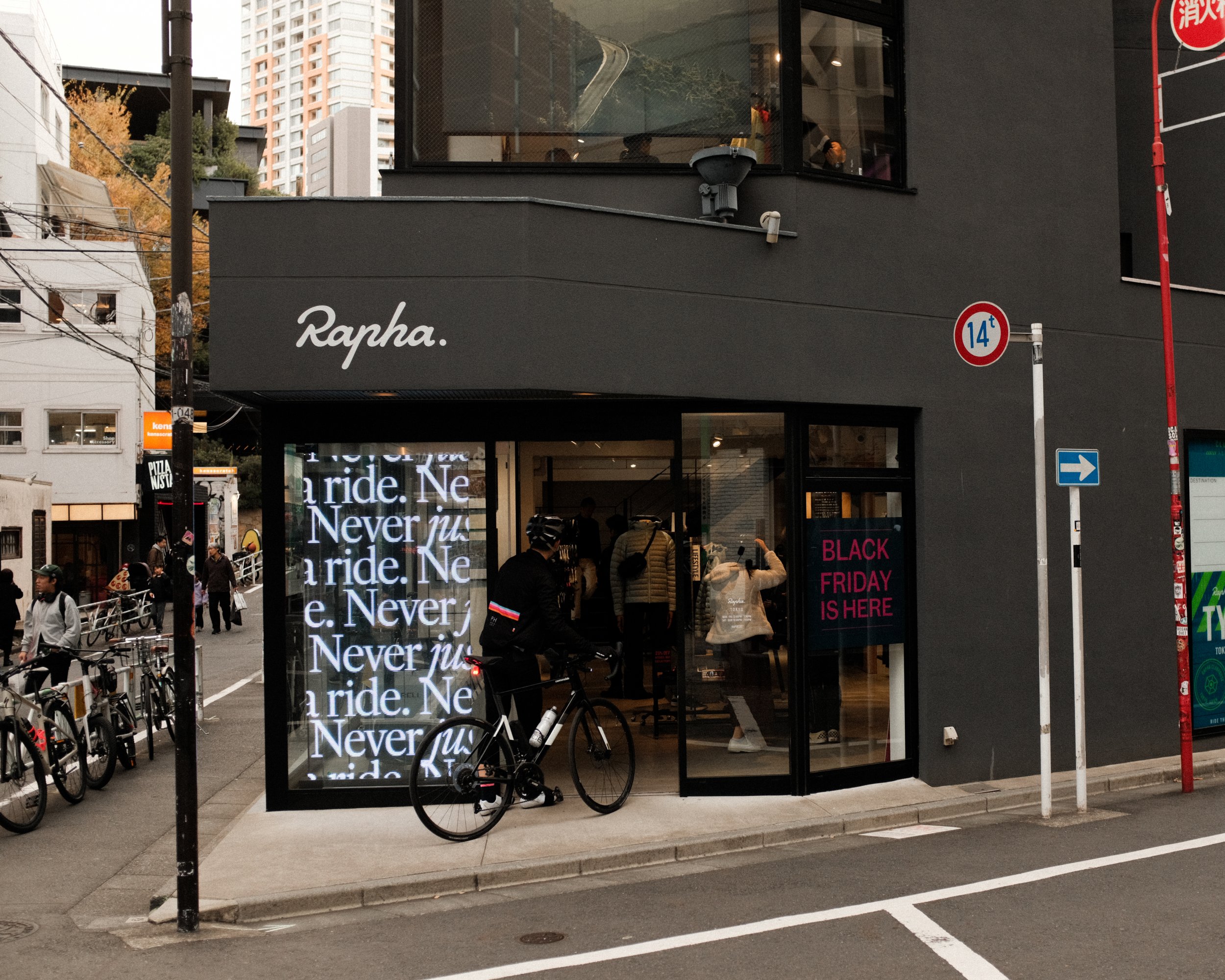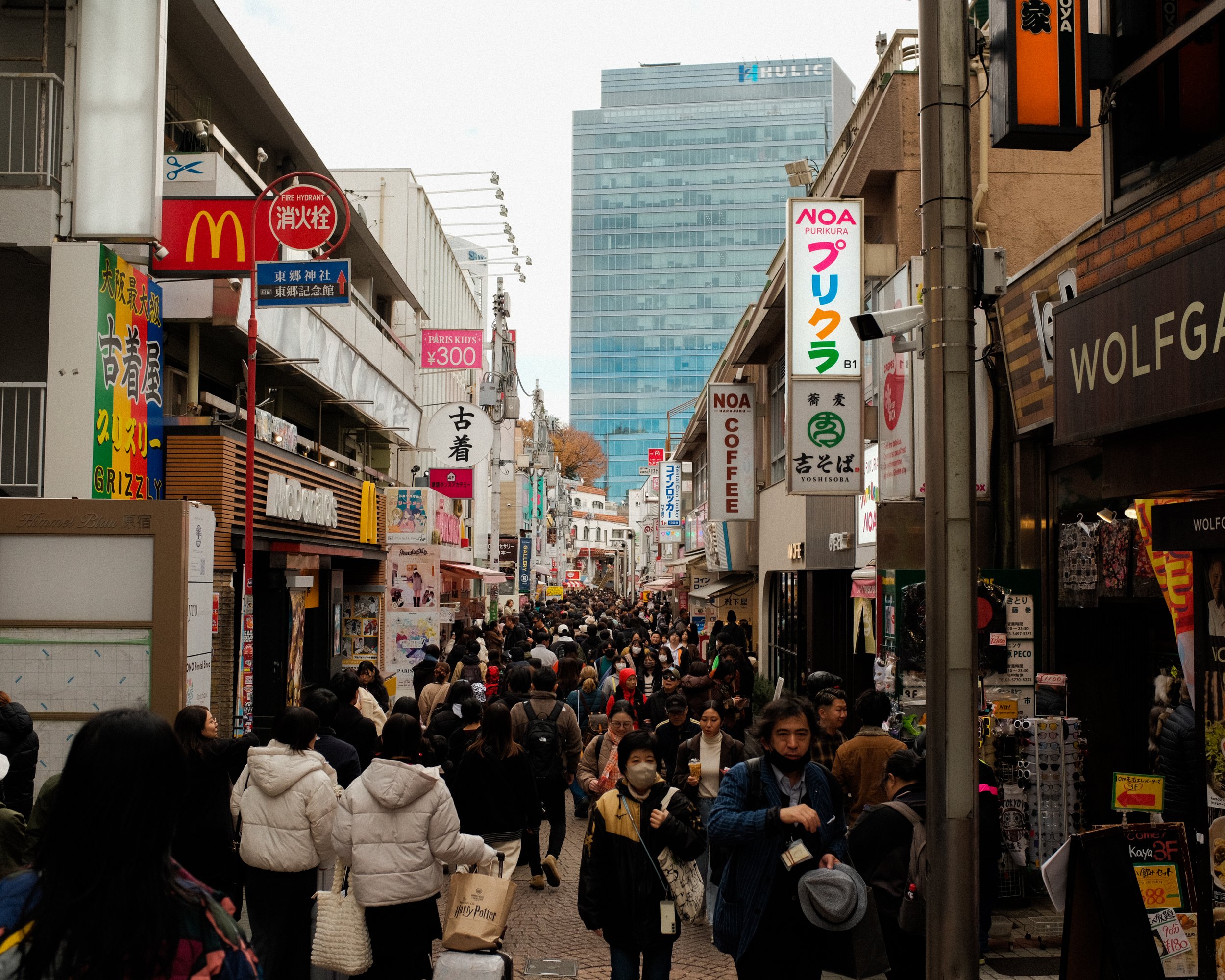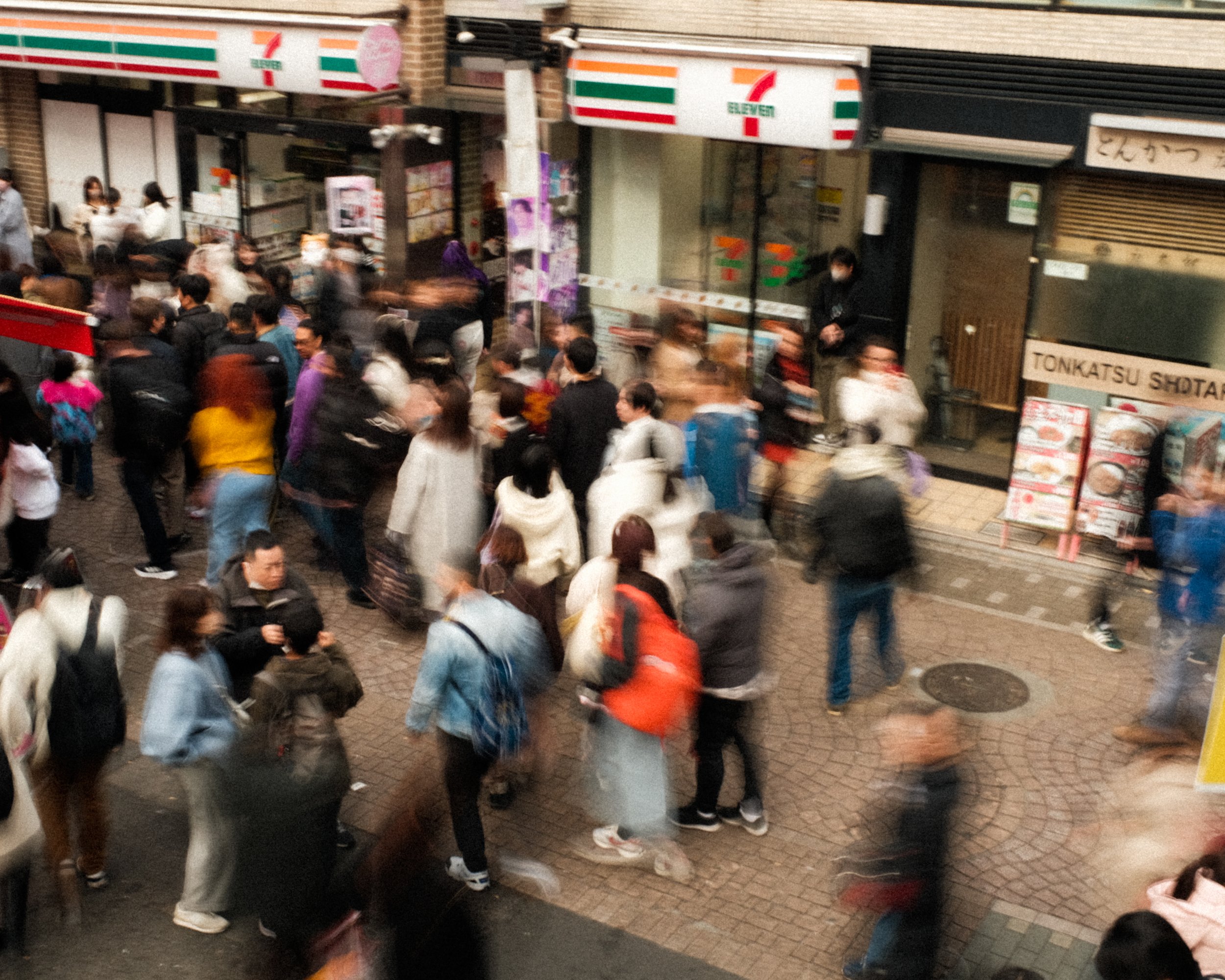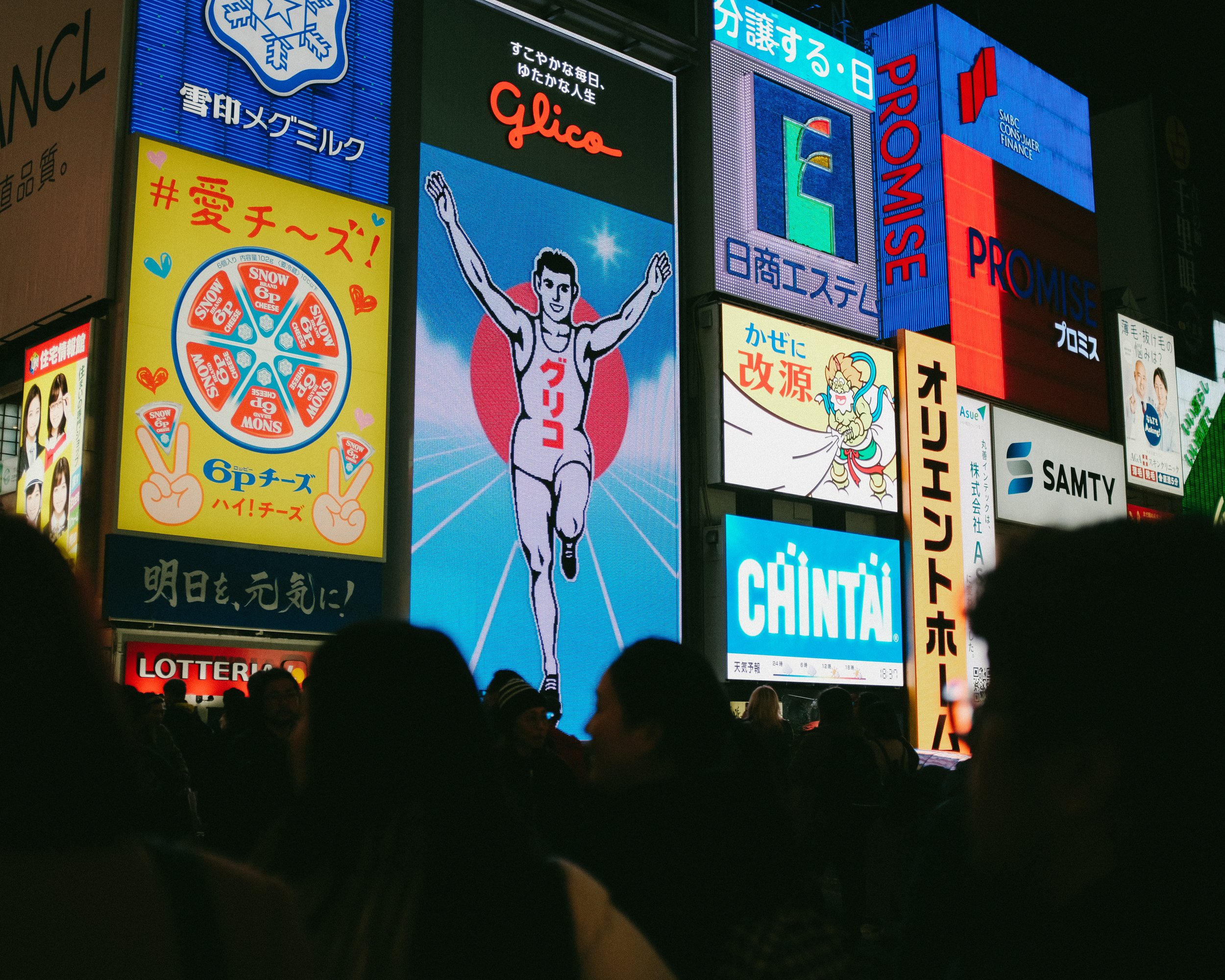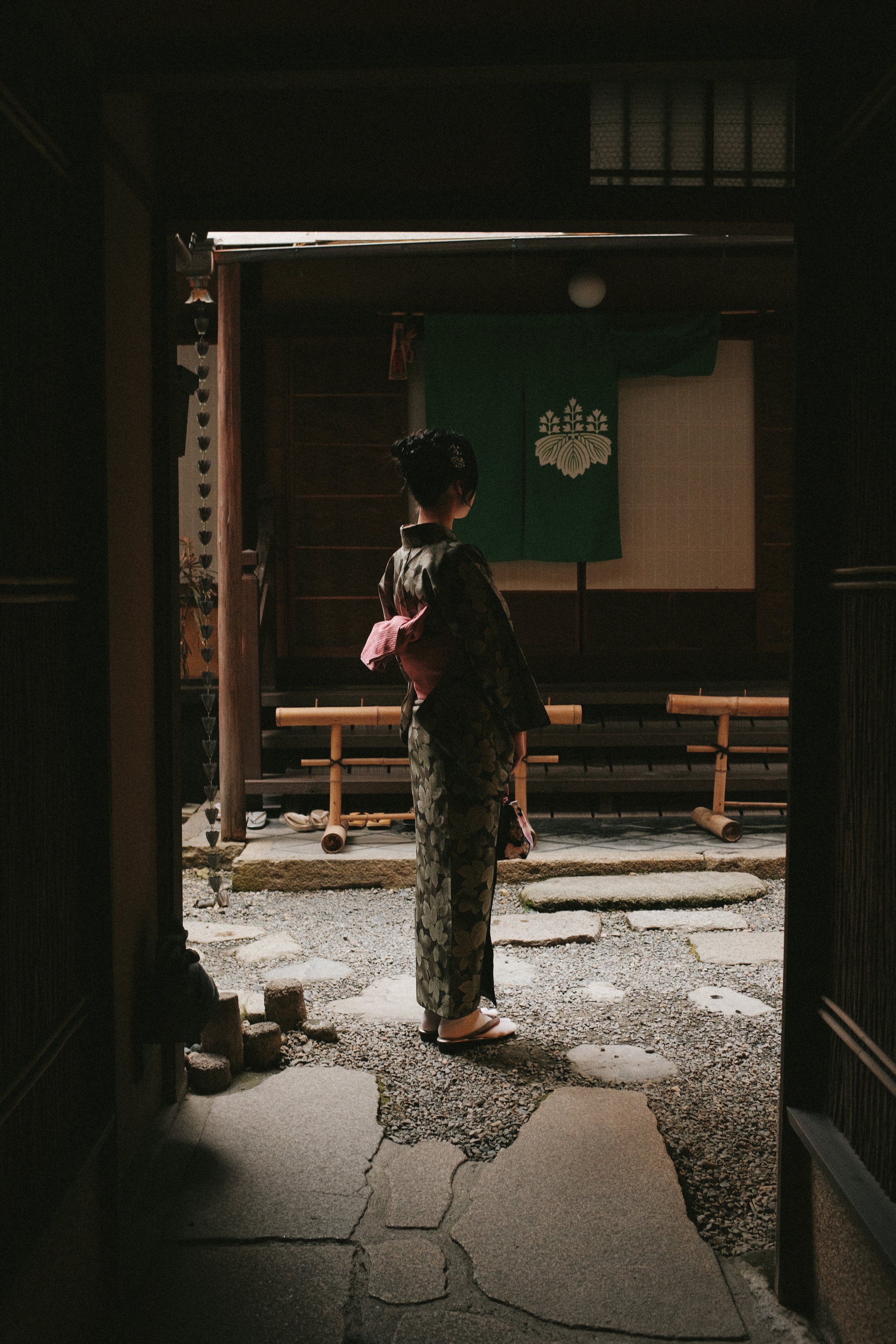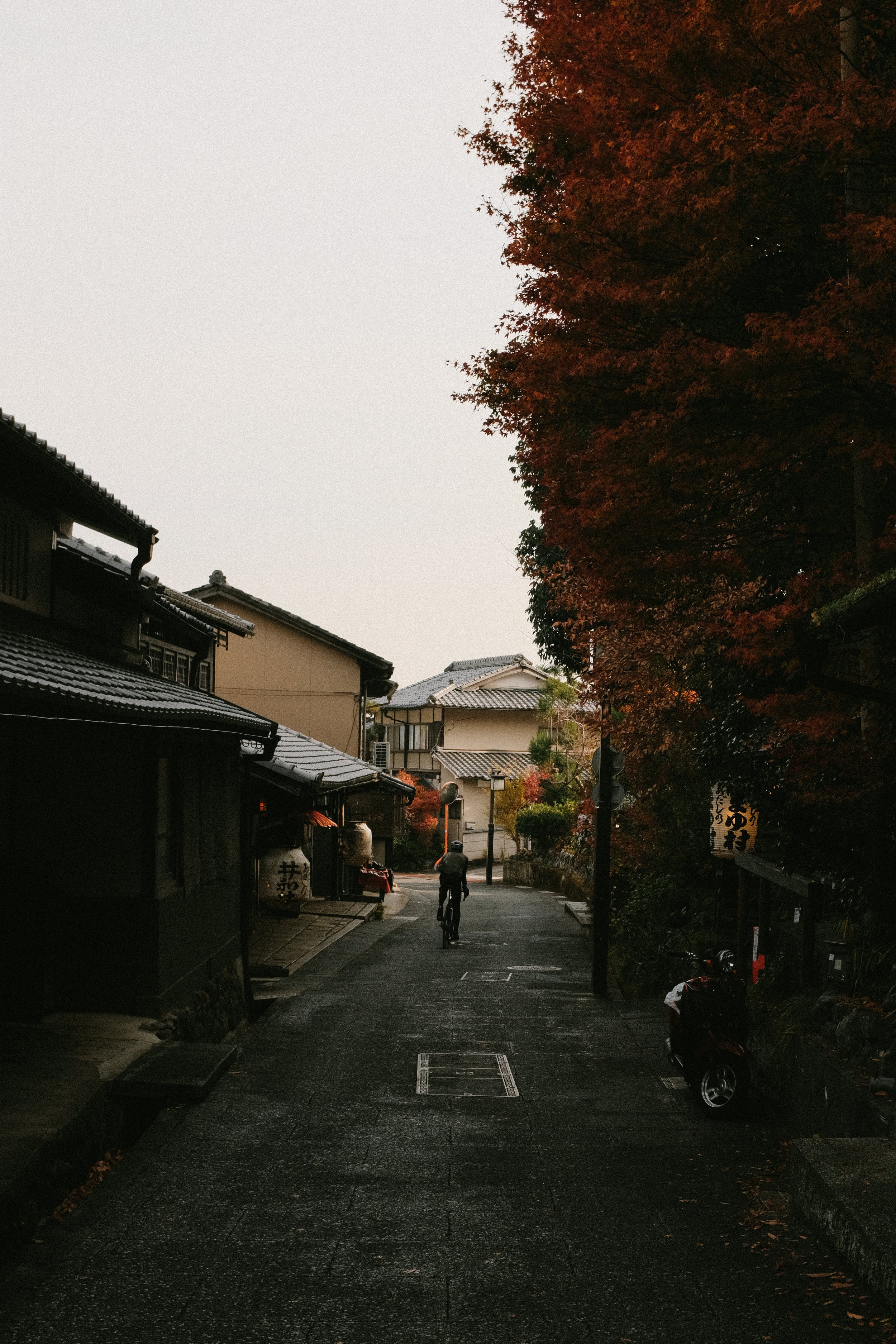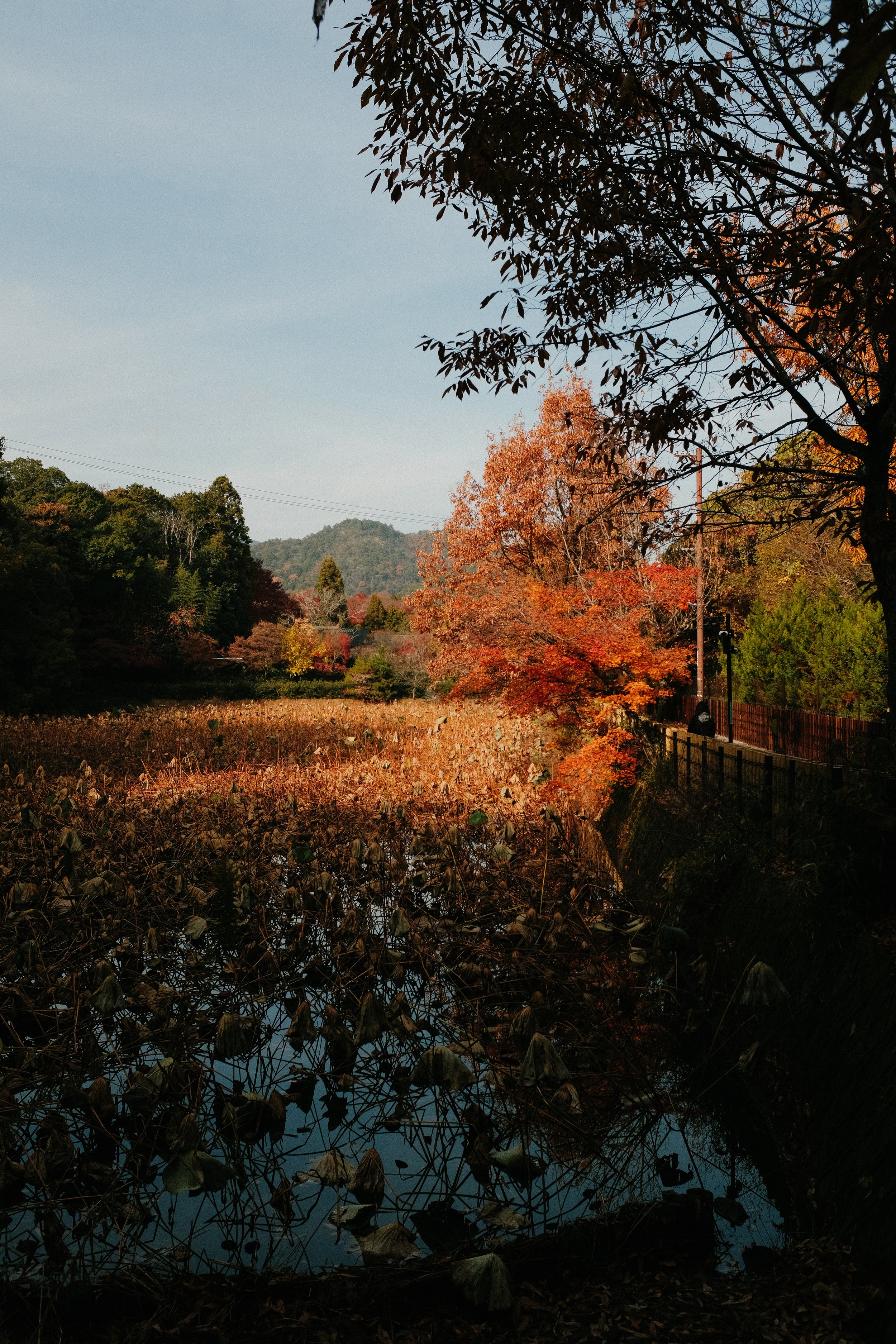Japan
どうぞ
〰️
dōzo
どうぞ 〰️ dōzo
Stepping into the “land of the rising sun”, you are greeted by organised chaos that almost feels rehearsed. People go about their day-to-day life in a stoic way, moving around the city in a uniformed fashion. Arriving in autumn season, we made a two and half week journey across Japan by train, travelling from bustling Tokyo to a slower paced Osaka by shinkansen, then to Kyoto and back up again. Every major city has so much to offer that there’s no way you can see everything - in fact, you hardly scratch the surface which makes it an endless discovery and for that reason we hope to be back there one day.
sumimasen,
english?
Tokyo is a fast-paced modern metropolis that still embraces its traditional roots. The crowds are orderly, even when you expect it to be chaos. The Shibuya scramble crossing is one example - a sea of people, looks chaotic at first glance, but walking through it, it feels controlled and organised. Everyone looks neat and well dressed, even taxi and bus drivers wear suits, you’ll often see them on the side of the road cleaning their taxis.
It’s a friendly atmosphere, with many signs in both English and Japanese. With plenty gardens to retreat to when needed, there are volunteer guides readily available to give insights on the surrounding area and events being held in the gardens.
When the sun sets and the neon signs light up, Tokyo’s nightlife begins. Scenes of Japanese ”salarymen” drinking and eating, loud chatter and laughter can be heard from afar.
Every district has its own quirks, rich with history and culture, Tokyo has a neighbourhood for everyone.
Tokyo is a walking city,
once you grasp the trains
well thought-out network,
get comfortable, walking is
the best way to get around.
While exploring Tokyo, you’ll find mothers picking up children from pre-school, kids going to the park on their own, retired people out and about, teenagers leaving school, police on patrol and lots of shoppers - all on bicycles.
For those not brave enough to share the roads with cars, cycling infrastructure starts with the wide shared paths on the sidewalk. Protected bike lanes in Japan are virtually nonexistent, despite the lack of infrastructure, cycling is fairly safe and the bike culture is built on people’s patience.
Osaka being known as the city of merchants and “Japan’s kitchen”, street food vendors preparing takoyaki are waiting to greet you.
With a change of pace, Osaka has a more relaxed vibe. Take a walk along the river running through the city, explore Osaka Castle and the surrounding park, and check out the dazzling neon billboards of Dotonbori, along with its many food stalls.
The city has several long shopping streets and arcades, kind of like street markets but indoors. Inside you’ll find anything from souvenirs to food and hidden cafes.
Both locals and tourists can be found hitting the streets, with so many school tours, you begin to wonder if the kids are ever on school grounds.
Japan’s train network
runs like clockwork, if you
miss your train, knowing
that the next line will arrive
exactly on time, brings
much comfort and makes
travelling less stressful.
While walking through an
indoor street market, we
found a hidden cafe, playing
beats from an artist, by
the name of iri.
Kyoto is considered the cultural heart of Japan, with numerous temples, gardens and other historical landmarks scattered across the city. Slower and more deliberate in pace, its traditional architecture creates an atmosphere that makes you feel like you were in a different time in Japan.
In Kyoto it is quite common to see yukata and kimono clothing being worn by both tourists and locals. In Gion, the Geiko district, tourists in kimonos are sometimes mistaken for off-duty Geikos.
Jumping onto a rickshaw tour, the guide will give you a run down of Kyoto’s history and past. They’ll also show you the best locations for picturesque photos.
There are many hidden side streets and alleys to explore, not just tourists but even locals seem to carry a camera.
Even with crowds, Kyoto isn’t as loud as the other cities.
Gion is the famous Geiko district,
you will find well-preserved streets filled with historical architecture
and designs, with small shops and
traditional restaurants.
Here you will see Maikos and Geikos
going about their day. A Maiko is an apprentice Geiko, who will eventually
become a Geiko.
Kyoto is filled with many
side streets, in which cars
can pass through.
With no traffic lights, workers
are dispatched to control the
flow of traffic.
Pontocho is a narrow alley, running one block west of Kamogawa river, pedestrian only.
By day it’s not much to look at, but in the evening it becomes a magical place. Lined with old wooden buildings, housing cozy cafes, bars and atmospheric dining.
Towards the southern end of the lane around dusk, you might even spot a Maiko or Geiko, heading to an appointment at one of Pontocho’s elite restaurants.
arigato
ありがとう
〰️
arigato ありがとう 〰️
if you’re wondering,
everything was filmed
and photographed
on a Fujifilm X100F
using my own recipe.













